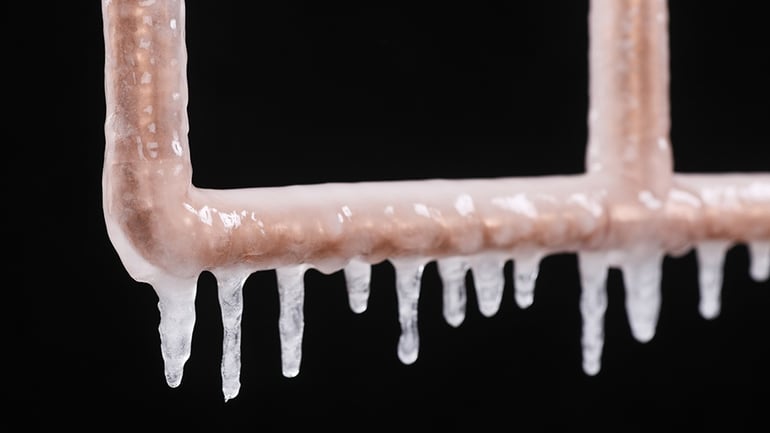 One of the biggest plumbing problems during the winter is frozen pipes.
One of the biggest plumbing problems during the winter is frozen pipes.
When your home’s pipes are subjected to the severe Maryland cold, their material is under tremendous pressure from water expansion. If the pipe material can’t withstand the pressure, it’ll burst, which can cost you hundreds in damages and repairs.
To help you save a little holiday money, here’s Warner Service’s guide to preventing, finding, and properly thawing frozen-over pipes:
Prevention
- If you have a swimming pool, drain the water from the pool and sprinkler supply lines by following the manufacturer’s instructions.
- Open and disconnect outdoor hose bibs, and allow water to drain completely. Once completed, close the indoor valves and keep the outdoor valve open. This allows the pipe to expand without causing an immediate burst.
- Look in your home’s basement, crawl spaces, attic, garage, and under the kitchen and bathroom counters for unheated water supply lines. Both hot and cold lines in these areas of your home should be insulated to maintain higher temperatures.
- Consider installing pipe sleeves, heat tape, or a heat cable for frozen pipe prevention. If you want to save money, use a newspaper for the same effect. No matter which tactic you use, keep the insulator dry.
- Keep the garage door closed if supply lines are close to the area.
- Remove any harmful household chemicals and cleaning products from under kitchen and bathroom sinks. After that, open kitchen and bathroom sink cabinets to allow warm air to circulate around the plumbing underneath the counters.
- When the Maryland weather is unbearably cold, let the water slowly drip from the faucet served by exposed pipes.
- Keep the programmable thermostat set to the same temperature during the night and day. However, if you're away for an extended period of time, set the thermostat to a minimum of 55 degrees Fahrenheit, and turn your heat on. You should also completely turn off the water supply to your home during this extended period of time to reduce pressure.
- Call a professional to relocate your outdoor pipes to provide less exposure to the elements.
- Call a professional to perform a plumbing maintenance check-up on your home prior to severe, cold weather.
Location
- If you turn on the faucet and only a trickle comes out, suspect a frozen pipe.
- If one pipe freezes, it’s likely that others have frozen as well. Check every faucet in your home.
Thawing Out
Warning: Do not ever use any device that has an open flame or chemically flammable properties, including matches, a lighter, a lit candle, and similar means.
- Turn on any faucet, and keep the water running at a constant slow drip.
- Apply heat to only the section of the pipe that’s frozen by using an electric heating pad, hair dryer, portable space heater, or warm water-soaked towels.
- Apply heat until the water pressure has been fully restored as indicated by the faucet water flow.
The last thing on your mind this holiday season should be finding and fixing frozen pipes in your home. Before the temperatures drop even further, take the proper precautions, such as draining certain home water supply lines, insulating damp areas, and keeping the programmable thermostat at a constant temperature.
Typically, this plumbing problem can be resolved before any serious damage occurs. However, if you do suspect a frozen pipe, it’s better to fix it sooner rather than later. Follow our other handy instructions to finding and thawing out the iced-over section in this blog post.
You can also download Warner Service’s Plumbing Troubleshooting Checklist by clicking on the button below for more comprehensive instructions:


